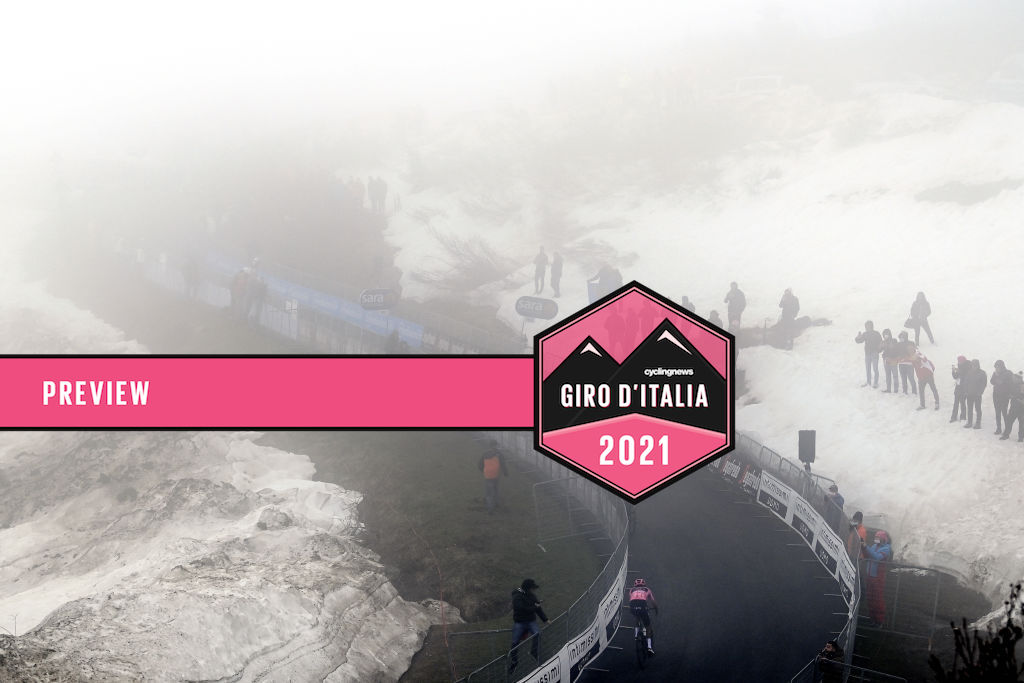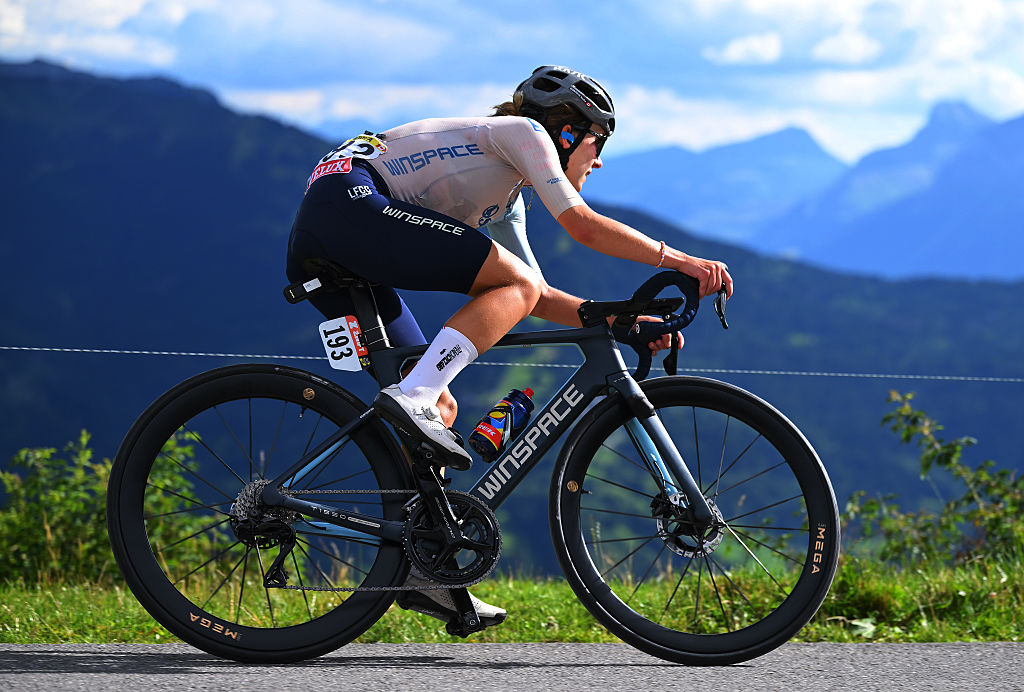Giro d'Italia mountain blockbuster: Contenders face tough climbing, heavy rain and cold on queen stage 16
Peloton set to tackle 6,000 metres of vertical climbing through the Dolomites

Temperatures hovering above freezing on the summits. Snow falling above 2,000 metres. Most likely sleet and heavy rain when it’s not snowing. Possible high winds. All this and 6,000 metres of vertical climbing, too.
Welcome to the Giro d’Italia’s toughest mountain stage of 2021, but don’t forget your raincoat. And your woolly hat. And your thermal underwear.
When Monday’s stage 16 of the 2021 Giro d’italia was revealed this February, with four first category ascents and at least six hours in the saddle, it already looked like a daunting enough challenge. But with yet another day of rough, bitterly cold weather forecast for what is already one of the most waterlogged Giros in years, stage 16 could well go down as one of the toughest days in the mountains of the entire 2021 season, no matter the race.
The Giro’s own race history will also add resonance to this mammoth 212-kilometre stage, together with stage 12 through the Apennines, the equal second longest of this year’s edition.
Cortina d’Ampezzo, the small finish town, is in the heart of the Dolomites and on one of the main mountain roads between the eastern Trentino and the central Veneto regions and as such, if not often a finish or start, has formed part of Giro stage routes on numerous occasions. But the town is also close to some of the Giro’s most feared climbs, the most famous doubtlessly the Tre Cime Lavaredo a little further east, where Eddy Merckx won in a blizzard in 1968, claiming the race lead and where Vincenzo Nibali had one of his most memorable successes in equally snow-struck conditions in 2013.
Any bad weather, on Monday, then, will carry its own distinct echos of the Giro’s past greatest days.
In 2021, the Giro’s stage 16 will bring the race into Cortina d’Ampezzo from the west, dropping down at perilous speed from the final challenge of the day, the notoriously difficult Passo Giau first category climb for the first time since 2012, when Spanish climber Joaquim Rodriguez outpowered a small group of favourites, including final winner Ryder Hesjedal on exactly the same roads.
The latest race content, interviews, features, reviews and expert buying guides, direct to your inbox!
On the GC front, though, history is doing anything but repeating itself. At that point of the 2012 race, the Giro overall battle was still very much unresolved between the Spaniard and the Canadian, while on this occasion there is a clear single reference point, in the shape of race leader Egan Bernal (Ineos-Grenadiers).
On Monday’s relentless series of ascents, Bernal’s multiple rivals from Simon Yates (BikeExchange) at 1:33, down to Giulio Ciccone (Trek-Segafredo) at 3:03, and perhaps beyond, will hope to undermine Bernal’s and Ineos domination, and perhaps, topple him.
They certainly won’t be able to complain about a lack of opportunities. Stage 16’s mountain challenges starts with the long, steady, Crosetta first category pass very early on, then is followed up with the much steeper Fedaia, close to the base of the famous Marmolada glacier, nearly 100 kilometres further on, back for the first time in a decade and perhaps most famous as the launchpad for Marco Pantani’s Giro offensive of 1998.
Next to come is the race’s Cima Coppi or high point, at 2,239 metres above sea level, in the shape of the Pordoi, and where Fausto Coppi headed the Giro field over the top no less than five times.
Finally, there’s the ultra-difficult Giau, just six metres lower than the Pordoi at the top of the pass, and with its ten kilometres averaging a very steady, but demanding gradient of 9.3 per cent prior to the technical but fast drop down to Cortina d’Ampezzo, 18 kilometres further on.
All three of the final climbs are over 2,000 metres above sea level, making for an added challenge along with whatever else the weather gods decide to throw at an already rain soaked Giro peloton this May.
“Even if it wasn’t going to be such bad weather, the altitude and the big changes in temperature going up and down the climbs would make it tough,” EF Education-Nippo sports director Tom Southam tells Cyclingnews. “It’s a real classic Giro stage, and the weather will definitely make it worse.
“Saturday’s stage to the Zoncolan was an odd one, even though it was that climb, it was the easier side and down to the last few kilometres, it didn’t really take off.
“We haven’t had the epic stages where the peloton has been grinding away on one climb after another for a long time, so it’ll be a different style of riding.
“And because we’ve got the first cat climb early on, the early break isn’t going to be a weak one, either. So it’ll be harder for Ineos to let a break go and get 15 minutes, then pull back 14, as they’ve done before in the race this year.”
EF Education-Nippo's GC options run squarely through Hugh Carthy, currently fifth at 2:11, and Southam is optimistic that the British climber can impact more effectively on what is a full day in the mountains rather than the single, ultra-steep Zoncolan climb at the end of stage 14.
“His biggest blow to date was today [Sunday] after he lost Ruben [Guerreiro, injured and an abandon after the big early crash - Ed]. The Zoncolan was an explosive sort of effort, and the race only took off in a shorter period compared to what’ll happen tomorrow [Monday]. Hugh's only 20 seconds off the podium, so we’ll see what there is.”
For Bernal, too, Southam feels that Monday represents a very different sort of challenge to what has come up previously, and as he put it “you never know how it’s going to play out.
“[Gianpaolo] Caruso (Bahrain Victorious, third overall,) looks pretty good, [Simon] Yates (BikeExchange) is coming up, he’s been pretty quiet up to now, he took a lot of risks with his positioning early on, but he’s back in the race."
To sum up, Southam’s conclusions about what could happen in the Giro in the final week of the GC battle, then are very much along the much-quoted line of ‘it ain’t over until it’s over.'
"That’s exactly it,” he argues. “The Giro’s really only just getting beginning," starting, of course, with Monday’s weather-blasted mountain blockbuster.
Alasdair Fotheringham has been reporting on cycling since 1991. He has covered every Tour de France since 1992 bar one, as well as numerous other bike races of all shapes and sizes, ranging from the Olympic Games in 2008 to the now sadly defunct Subida a Urkiola hill climb in Spain. As well as working for Cyclingnews, he has also written for The Independent, The Guardian, ProCycling, The Express and Reuters.

